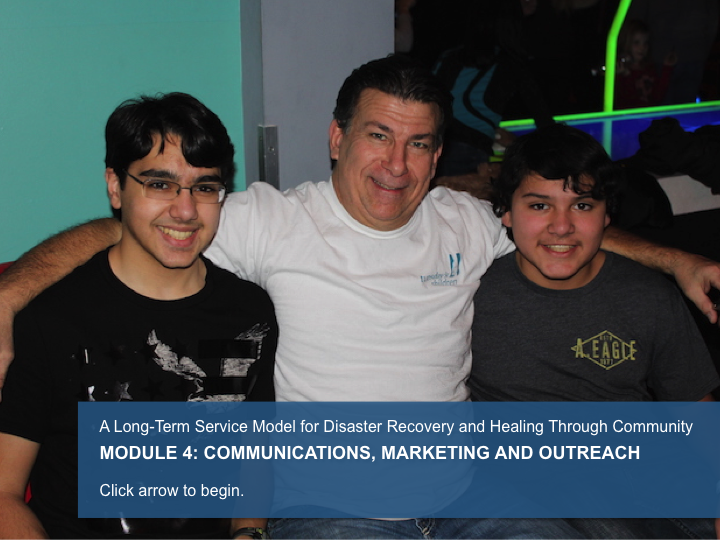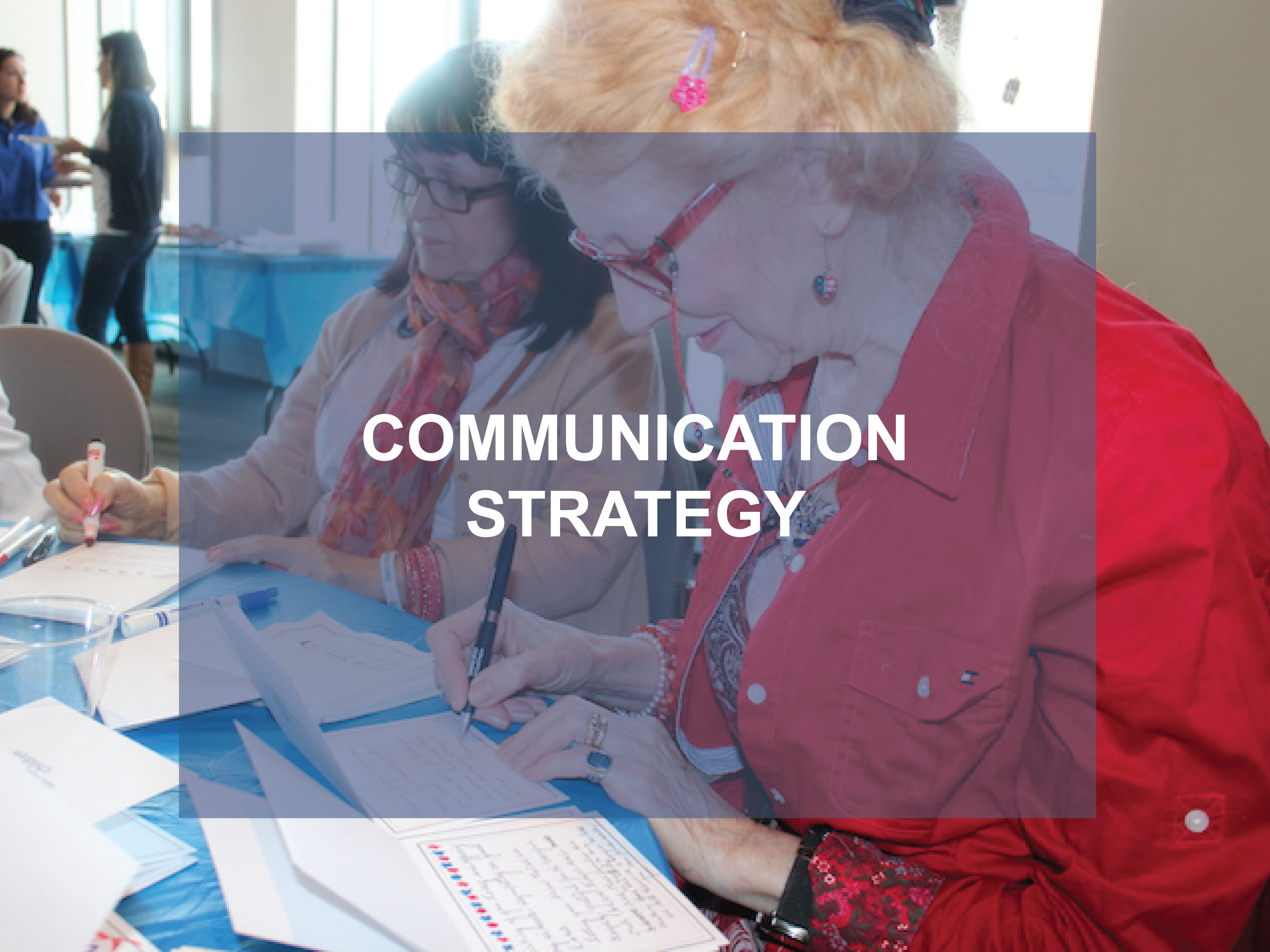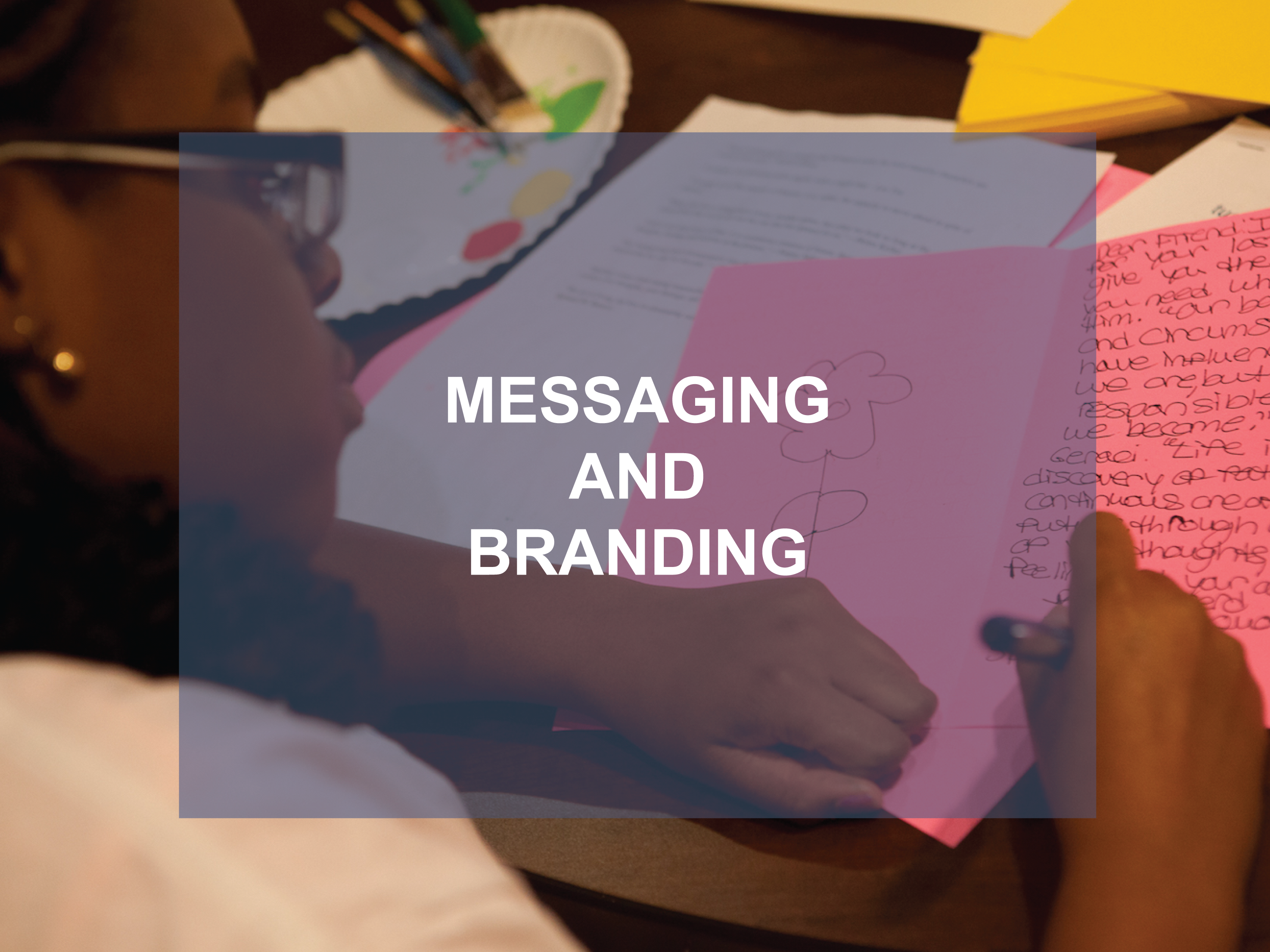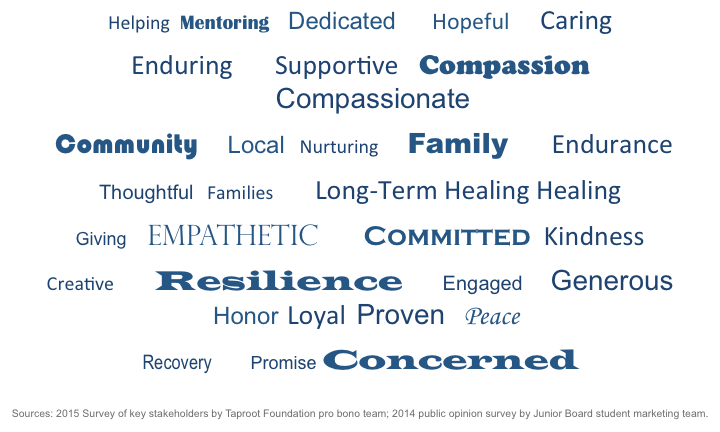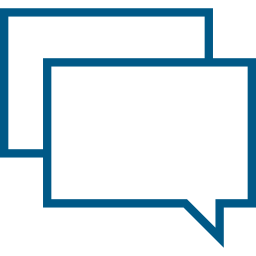Communications and Marketing Material
Organizations should consider a variety of outreach methods when developing a marketing and outreach plan.
Organizations can utilize traditional print and online methods of marketing, as well as creative ways to reach key audiences. Utilize traditional and creatively targeted marketing materials that appeal to your key audiences and constituents.
Think creatively about marketing materials that can become everyday items in the home and which convey your mission and services available.
Print
- Newsletters
- Postcards
- Flyers
- Brochures
- Posters
- Invitations
Online
- Website
- E-Blasts
- Event Registration
- Donations
- Social Media
Creative Marketing
- Palm Cards
- Fridge Magnets
- Bracelets/Pins
- T-shirts/Jackets
- Ties/Scarves
- Card Holders
Frequency of Communication and Marketing
It is important to be mindful of how often you reach out to your database and key constituents. No one wants daily emails, but you want frequent communication with your audience to make sure your key messages resonate. You can accomplish this by making use of a variety of marketing techniques so your audience doesn’t get overwhelmed by outreach.
Be mindful of how often you are sending new messages to your database and key constituents.
Types of Communication Channels
Print Communication
- Annual Appeal
- Annual Report (select donors)
- Seasonal Postcards (with program calendar)
- Save the Dates & Invitations (Annual Gala and Local Fundraisers)
Tuesday’s Children generally sends one print appeal per year, with seasonal postcards giving updates on programs and events two to three times per year.
Electronic Communication
- Appeals (End-of-Year, 9/11 Anniversary, Memorial Day, Giving Tuesday)
- Quarterly Newsletters
- Program Announcements & Registration Notifications
- Save the Dates
Email communications are more frequent and may include a quarterly newsletter, two to three email appeal campaigns per year, and regular email communications to encourage program participation and event registration.
Social Media
- Facebook
- Twitter
- Instagram
- LinkedIn
- Additional Support for Print and Email Notifications
Social media is used most frequently because the user can control how often they use the platform.
- Tuesday's Children utilizes social media channels (primarily Facebook, Twitter, Instagram and LinkedIn) to support print and email communications.
Outreach Methods
Tuesday’s Children surveyed key stakeholders who have been involved with the organization over the years to see how they heard about us. Initially, most families heard about us by word of mouth, indicative of the grassroots nature of our organization and the importance of the role the community played in spreading the word about our programs and their benefits.
How People Heard About Tuesday’s Children
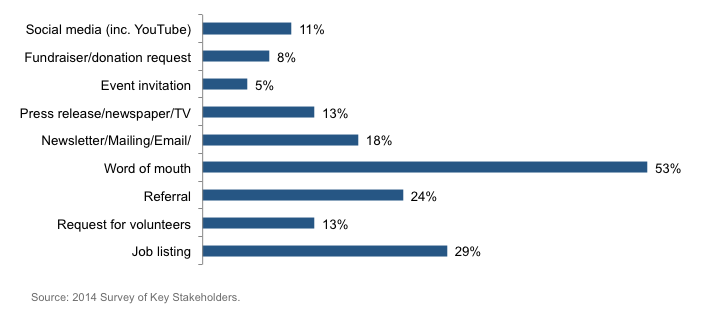
Developing Marketing Materials
You must be logged in to edit your profile.
Use of Images and Video
- Be mindful of the wishes of your service populations.
- Institutionalize waivers for all programs and client involvement when images or video will be captured.
- Act as an advocate for families and children when interacting with media.
Carefully consider when it is appropriate and not appropriate to capture images and videos of your key service populations.
Images:
- Social Media
- Website
- Print Marketing
- Email Marketing
- Newsletters
- Brochures
- Presentations
Video:
- Organizational/Program Videos
- Social Media
- Website
- Gala and Other Fundraisers
- Presentations
Leveraging Technology
You must be logged in to edit your profile.
Key Messages and Brand Strategy
Organizational Logo
It’s important to carefully select the images you will use in your organizational logo. Avoid using images that convey something other than your mission. For example, if you serve children and families, use an image that shows that. A nature image is nice, but it implies that you are an environmental organization and not human services.
A Picture Says 1,000 Words…
- Ensure that your logo communicates your message without words.
- If you serve families, does your image say “family”?
Tuesday’s Children logo
- Demonstrates our original motto: “Here Today, Here Tomorrow”. It conveys care, support and guidance.
- Depicts the sentiment behind Tuesday’s Children’s programming, which is long-term oriented and geared towards building sustainable bonds between individuals.
Key Messages and Brand Strategy
You must be logged in to edit your profile.
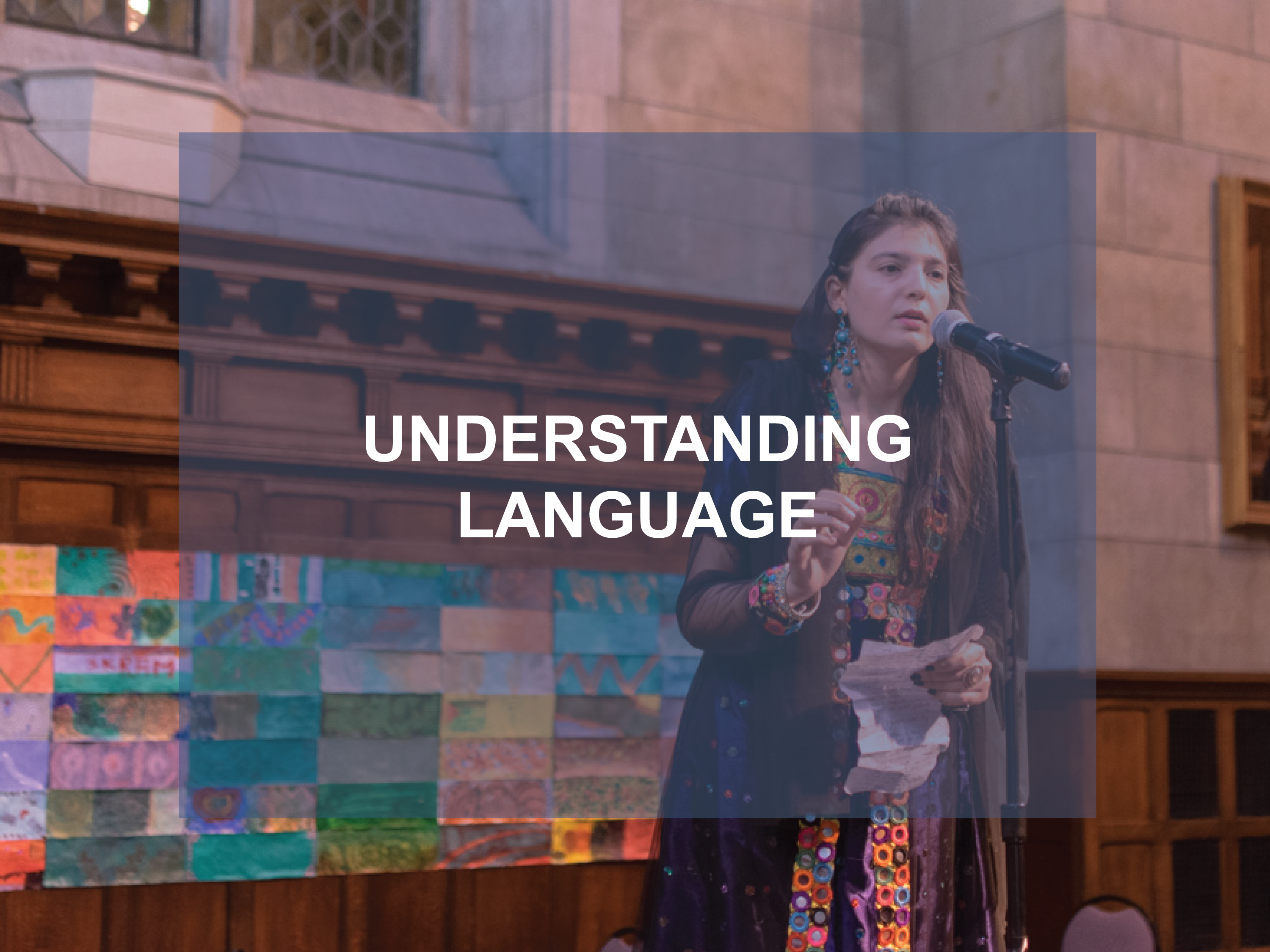
A look at terminology across populations
9/11
- Responders referred to the World Trade Center site as "the Pile" vs. "Ground Zero", which could refer to any bomb site.
- Some 9/11 family members preferred the term "murdered" or "killed" vs. "died" or "passed away" to emphasize the severity of their loss.
- Some women did not like to be called "widows".
- The 9/11 community has separate categories of "first responders" (FDNY, NYPD, PAPD) and "rescue/recovery workers" (all volunteers who responded in the days and months after 9/11).
Military
- Military families often say "suicided" or "died by suicide" vs "committed" suicide.
- "Gold Star" families
- Military "families of the fallen"
- The term "surviving spouse" is often used instead of "widow".
Newtown
- The community adopted the term "brain" health vs. "mental" health.
- Residents referred to "dot" points in documents instead of "bullet" points.
- The term "Sandy Hook parent" referred to all parents who had kids in school that day, not just those who experienced losses.
Global Terrorism
- "Victims" doesn’t convey strength and resilience
Positioning Statement
A sentence or two to describe how an organization wants to be perceived by its target audiences. (Taproot Foundation)
Our positioning statement:
Tuesday’s Children offers a time-tested, long-term approach forged in the aftermath of Tuesday, September 11, 2001, that enables children, families and communities torn apart by tragedy to heal, recover and thrive for a lifetime.
Difference between a Mission Statement and Position Statement
- A mission statement defines an organization’s purpose and guiding principle. It is focuses inwards.
- A positioning statement focuses outwards and defines what is unique and of value in the organization. It establishes a reputation.
Elevator Pitch
Designed to attract potential supporters, elevator pitches are useful messaging tools that help explain an organization’s purpose, the services they deliver and the value of its work.
Like mission statements, an organization’s positioning statement and elevator pitch may change over the years.
Tailored to different audiences:
- Corporate Donors and Foundations
- Individual Donors
- Prospective Board Members
- Original Service Population
- Prospective Service Communities
- Prospective Service Population
Varied lengths:
- 15 seconds/50 words
- 30 seconds/100 words
- 60 seconds/200 words
Elevator Pitch Examples
These are some examples of elevator pitches that Tuesday’s Children uses, primarily for institutional donors. It is valuable to ensure that all those in leadership roles are well versed in these pitches so they are able to be ambassadors for our cause.
In 30 Seconds
Tuesday’s Children, with our 9/11 expertise and 15 years of experience, is a unique and vital resource to help survivors of mass violence. Our one-of-a-kind, Long-Term Healing Model assists children, families and entire communities to come back from unspeakable loss. Tuesday’s Children’s time-tested local and international programs can succeed only with your support. So please be generous so that Tuesday’s Children’s unique capabilities can be there when tragedy strikes.
In 15 seconds
Please help Tuesday’s Children put our unique 9/11 experience and expertise to work helping traumatized children, parents and communities recover and heal from the long-term effects of mass violence.
Understanding Language
You must be logged in to edit your profile.
Congratulations!
You have completed Module 4: Communications, Marketing and Outreach.
You are now ready to begin to create your brand strategy and key messages, as well as identify keywords and language sensitivities and formulate your pitch to different audiences.
To get started, click "Access Your Roadmap".
